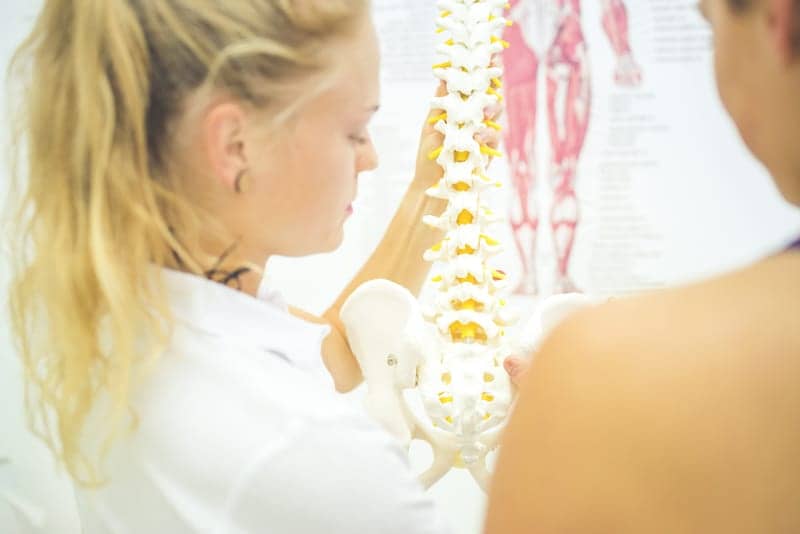by Helene Darmanin, PT, DPT, CSCS
Traditional ortho looks at muscles outside the pelvis—but what happens when the ones inside it are causing the symptoms? Pelvic health physical therapy is the same musculoskeletal physical therapy in a small, intimate location. Here are some quick tips for when and why you should refer your client to a pelvic health specialist, and ways you may be able to start them on their healing journey.
Musculoskeletal Care for an Intimate Area
If you think of the core as a box, the pelvic floor is the bottom. Boxes with a good, strong bottom are generally more useful. But we don’t want the pelvic floor to just be strong, we also need it to be supple and have a full range of motion, like any muscle. This way, it can react dynamically to demands and regulate intra-abdominal pressure to maintain continence and provide stability to the hips and lumbar spine.
Pelvic floor dysfunctions can be contributory or causative of lower back pain, the most common musculoskeletal condition in the United States. Here are some clues in a patient’s history that the pelvic floor may be a symptom generator:
- History of falls: A fall on the tailbone can cause persistent derangement of the coccyx, and therefore the pelvic floor muscles.
- History of sexual trauma: A common reaction to trauma is muscle guarding
- Recent history of pregnancy: No matter how someone gave birth, their pelvic floor had to support a growing fetus over the gestation period.
- Currently menopausal: Even the changing hormones of perimenopause can change tissue laxity, especially in the pelvis.
- Incontinence: Involuntary loss of urine, feces, or gas always indicates pelvic floor dysfunction (and is treated by more than just Kegels, you’d be surprised how often these are erroneously prescribed by well-meaning medical professionals).
- Painful penetrative sex: Clinically called dyspareunia, this could be indicative of a hypertonic pelvic floor.
- Difficulty emptying bladder: Also, a potential indicator of the hypertonic pelvic floor, you can refer for pelvic health therapy or to a urologist or urogynecologist for a post-void residual test to ensure there are no physiologic causes.
- Chronic constipation: Another potential indicator of pelvic floor hypertonicity, especially if the patient has tried many things (e.g. fiber, good hydration).
Some of these questions can be uncomfortable to ask, but usually the more professional and nonjudgmental you are, the more a client will open up to you. Often, these folks have been suffering in silence for a long time because they don’t know who to ask for help, they are ashamed, or they’ve simply accepted one of these common issues as their new normal.
Here are some possible findings upon examination:
- Posterior pelvic tilt in quiet standing: This posture is common in folks who have chronic pelvic pain.
- Poor pressure management: You may observe that when performing exercises that increase intra-abdominal pressure, the patient holds their breath and/or bulges out their abdomen.
- Asymmetrical hip arc range of motion: Asymmetry in the total arc of motion (external rotation plus internal rotation) between the hips may be indicative of SI joint, hip, or pelvic floor pathology.
- Difficulty taking deep breath: The pelvic floor and diaphragm work in concert for breathing. If one has limited range of motion, it’s likely the other does too.
- Cesarean scar: As with any orthopedic surgery, Cesarean scars can be inflexible, adhesed, and/or hyperirritable, and therefore disruptive of local muscle function (i.e., the abdominal muscles that work closely with the pelvic floor).
- Tenderness to palpation at obturator internus/piriformis and/or medial to ischial tuberosities: if you feel comfortable palpating these areas, they are relatively easily accessible external areas of the pelvic floor.
Treat the Low-Hanging Fruit
If you’ve determined that the client may have pelvic floor dysfunction, you should still be able start helping them before they see a specialist. If you generally use an impairment-based model, what I’m about to say will make a lot of sense to you: treat the low-hanging fruit. Poor hip abduction strength? This could be causing increased stress on the pelvic floor. Adhesed, inflexible cesarean scar? This tissue could be disrupting abdominal function and thereby putting more stress on the pelvic floor and surrounding area. Impaired thoracic mobility? Weak plantar flexors? You guessed it—more stress on the pelvic floor. You can help a client out with these impairments, and then refer them for more specialized care to address the problem more directly.
It is beneficial to have a good relationship with a local pelvic health therapist, but if you don’t know one yet, you can find one from the APTA Academy of Pelvic Health PT Locator (https://ptl.womenshealthapta.org/). I’m also happy to help you find one.
We all went into the rehab profession because we want to help folks feel better (it certainly wasn’t for the money!). Pelvic health could be the missing puzzle piece for some of your clients with low back pain, and you might be the only one in a position to find that piece. So keep an eye out for these signs and symptoms, and get your people the help they need!
Dr. Helene Darmanin, PT, DPT, CSCS, is an orthopedic and pelvic health physical therapist, a Kane School-certified Pilates Mat Instructor, a Research contributing author, and founder of Mama Bear Physical Therapy, a personalized virtual practice clinic that provides orthopedic, pelvic health, lactation, and nutritional care and support for pre and postpartum women via personalized one-on-one sessions and virtual group classes. An orthopedic and pelvic -health physical therapist expert, with over a decade of experience, Dr. Darmanin is seen among her peers as the leader for her innovative, empowering, and steadfast approach to preparing and healing expectant and new moms. To learn more about Mama Bear Physical Therapy, please visit, https://www.mamabearpt.com/.




